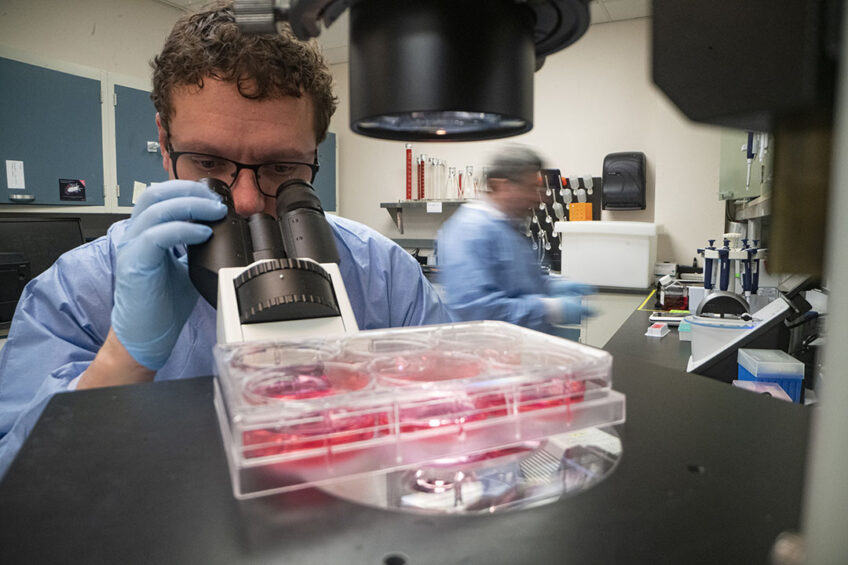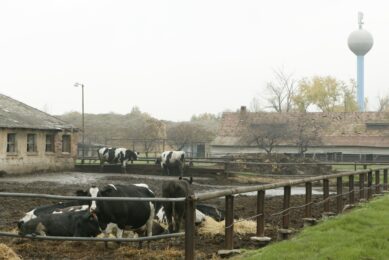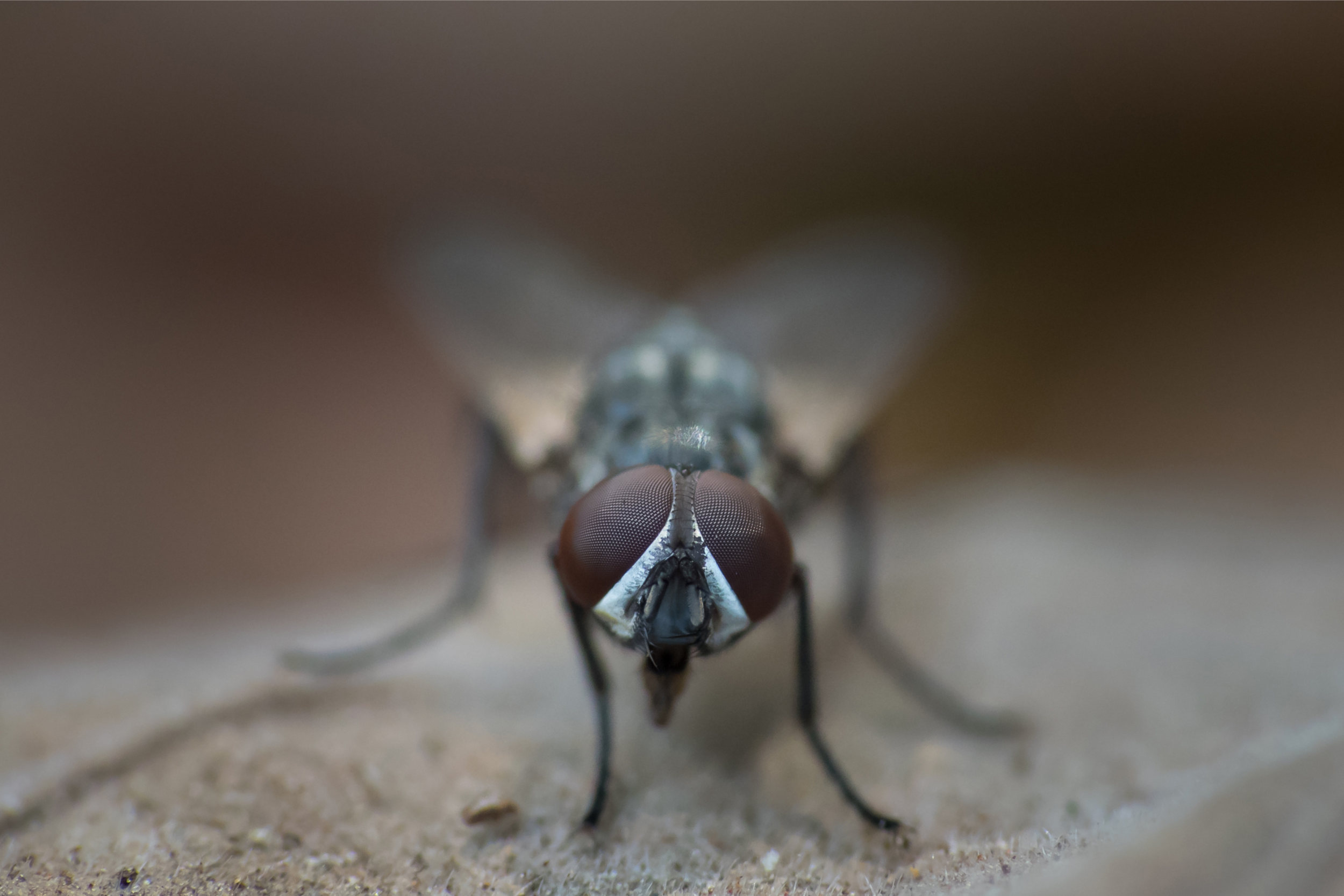Live attenuated ASFv strains: what role can they play?

All around the world, researchers are working hard to provide the world with new vaccines against African Swine Fever. As is well known, this is not an easy task. Live attenuated ASFv strains can form a good basis for a vaccine. How does that work in practice?
African Swine Fever (ASF) is a highly contagious viral disease manifesting differently in wild and domestic pigs. ASF occurs all over the world, including Europe, South America and Asia. Its impact depends on the virus virulence, the infectious dose and the infection route.
ASFv live attenuated strains
Most ASFv isolates are 100% lethal in pigs. Some are low-virulent strains with lower mortality rates, and others are completely attenuated strains causing no clinical symptoms. The ASFv live attenuated strains usually appear some time after the invasion of virulent strains. This leads to the long-term coexistence and adaptation of ASFv and its host. These strains have decreased virulence in domestic swine. This encourages their use as potential vaccine candidates.
Therefore, the gene sequence variation of ASFv live attenuated strains provides reference for the scientific prevention and control of ASF and the development of new vaccines.
ASFv virulence
ASFv infection produces a wide range of clinical forms: peracute, acute, subacute and chronic in domestic pigs.
Acute infection of domestic pigs causes anorexia, fever, nosebleeds, erythema, cyanosis of the skin, black stool and, in some cases, diarrhoea. Up to 100% mortality occurs 12 to 14 days after infection.
Moderately virulent strains of ASFv cause subacute disease leading to milder clinical signs and injury. Death occurs 15 to 20 days after infection. Several genes are linked with the virulence of ASFv isolates, for instance, UK (DP96R) and 23-NL (DP71L or I14L). These are located adjacent to each other in the right variable region of the ASFv genome.
Deletion of the UK and 23-NL genes from pathogenic ASFv significantly diminishes ASFv virulence in pigs. In addition, deletion of multigene family genes on ASFv reduces the ability of the virus to replicate in porcine macrophages or in ticks and completely attenuates the normally strong virulence.
ASFv live attenuated strains
ASFv live attenuated strains are obtained using various methods, including:
Isolating naturally attenuated virus strains from infected pigs in the field;
Passaging virulent strains in primary cell culture or in continuous cell culture; and
Genetic manipulation of highly virulent field isolates.
Low virulence field isolates
Naturally attenuated virus strains are primarily isolated from infected pigs in the field. There are at least 6 well-known field attenuated ASFv strains.
The NH/P68 strain isolated from pigs chronically infected with ASF in central Portugal in 1968. It induces the production of specific antibodies by the host and protects the host from challenge exposure by the virulent strain Lisbon 60.
The OURT 88/3 strain was isolated from Ornithodoros erraticus on a farm in Portugal in 1988.
The Estonia 2014 strain was isolated from wild boars in northeast Estonia in 2014.
The HuB20 strain was isolated from porcine muscle tissue with bone.
The Pig/Heilongjiang/HRB1/2020 strain was isolated from the spleen of pigs in China.
The Lv17/WB/Rie1 strain (Georgia-derivative attenuated field isolate) belonging to the genotype II of the ASFv was isolated in Latvia.
Live attenuated virus strains effectively protect against the challenge with homologous virulent virus. In the 1960s, a naturally attenuated field isolate of ASFv belonging to the genotype I was used to develop a vaccine in Portugal. However, this approach resulted in residual virulence in a high proportion of immunised pigs, which developed chronic ASF lesions.
Viruses attenuated by tissue culture passages
Another method to obtain ASFv live attenuated strains is the adaptation process in which the virulent isolates replicate in a variety of primary swine cell cultures or established cell lines to lose their virulence. The attenuated ASFv strains obtained through serial passage are not only candidates for ASF vaccine research. They are also useful in the study of molecular genetic characteristics and pathogenic mechanism of the virus.
Passaging in primary cell culture or in continuous cell culture
The attenuation of ASFv can be performed through passaging in primary cell culture or in continuous cell culture. However, the serial passage approach gradually decreases the virulence and the immunogenicity of the virus.This in turn makes it difficult to produce protection against subsequent challenge by the homologous virus. In addition, attempts to attenuate ASFv by additional passage in cultured cells is associated with an altered expression or even complete deletion of genes encoding certain virulence or immune-associated evasion factors. This may result in strains that have completely lost the pathogenicity to pigs.
Vacdiva
The European Union funded an EU project called “Vacdiva”, with the objective to develop an effective vaccine against ASF over the next 4 years. Preliminary data indicate that some porcine continuous cell lines might be realistic alternatives to primary macrophages for research on ASFv and for the large-scale production of a vaccine against ASFv. Thus far, promising candidate cell lines for ASFv LAVs were individuated in WSL, PIPEC, ZMAC-4 and PPK-66b, which supported the replication of NH/P68, ASFV-G-ΔI177L, OURT88/3, TSP-080/300, and TS-7/230, respectively. Although the preliminary results on some porcine cell lines are promising, further studies are necessary for the use of these cell lines for the safe large-scale production of ASFv vaccines.
Viruses with genetically engineered deletions
Genetic manipulation of highly virulent field isolates is another approach to creating attenuated strains of ASFv. In this approach, the virulent genes are removed from the virus genome to achieve attenuation. However, the identification of the specific deleted genes causing attenuation is still unknown.
According to the research studies, gene-deleted attenuated ASF viruses are still the most effective vaccine candidates to prevent ASF. It is however, crucial to choose a target gene, to consider the safety of immunisation and the suitability of protection, and to achieve a balance between safety and efficacy.
In this context, the work of the USDA’s Agricultural Research Service (ARS) scientists is well-known. They developed a vaccine candidate called ASFV-G-ΔI177L in which they deleted 6 genes. It can be commercially produced while still maintaining vaccine efficacy against Asian ASFv strains when tested in both European and Asian breeds of swine. The researchers reported that the deletion of the virus-specific ASFv gene A137R from the highly virulent ASFv-Georgia2010 (ASFv-G) isolate induces a significant attenuation of virus virulence in swine. A vaccine based on this approach is currently being rolled out in Vietnam.
Knowledge gaps
Further research is necessary to assess the critical aspects of vaccine candidates such as onset and duration of immunity, genetic stability, attenuation stability, minimal protection doses and possible routes of inoculation. In addition, standardisation of methodologies to test efficacy of vaccine candidates, vaccine doses, route of inoculation and challenge dose are needed.
It is recommended to evaluate the bases of the differential effect in virus virulence of deleting the same genes among various virus isolates. The discovery and characterisation of virulence-associated genes and their interaction with the host are still unclear. Therefore, it is necessary to conduct a more in-depth analysis of the ASFv genotype through high-quality whole-genome sequencing to improve our understanding of the epidemiological tracing of this disease, including the evolutionary relationship and the phenotypic differences between different ASFv strains and the inducing factors related to genomic variation.
Concluding remarks
Live attenuated ASF vaccines can induce varying levels of protection ranging from 60% to 100% against challenge with virulent virus, but they have the potential to cause post-vaccination reactions and adverse side effects and safety concerns.
The advantage of immunisation with live attenuated virus rather than with selected antigens is the eliciting of immune responses against all the viral antigens that are normally encountered by the host during an infection; therefore, it is more effective. This approach appears for now to be the most promising of all strategies, yet further studies are required to develop live attenuated ASF vaccines and to address major challenges and safety concerns.
References available upon request.











